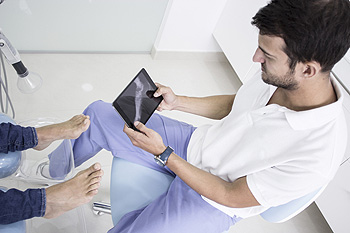 Visiting a podiatrist can significantly enhance your foot health and overall mobility. Podiatrists specialize in diagnosing, treating, preventing, and rehabilitating lower limb issues. This can include general foot conditions like bunions, calluses, and fungal infections, as well as more complex problems associated with diabetes and arthritis. If you have persistent foot pain, a podiatrist can provide effective relief through treatment and exercises tailored to your specific needs. Athletes, dancers, and runners benefit from a podiatrist’s expertise in managing sports injuries, such as sprains and fractures. Custom orthotics are another vital service provided by podiatrists. These specially designed shoe inserts can correct biomechanical issues, alleviate pain, and enhance walking or running performance. Podiatrists also offer essential footwear advice, helping individuals select the right shoes to support and improve their gait. Additionally, they perform minor surgeries for skin and nail concerns, such as ingrown nails and warts. By addressing foot problems early, podiatrists help prevent further complications, enhancing your quality of life and mobility. If you are suffering from foot, toe, or ankle pain, it is suggested that you schedule an appointment with a podiatrist for an exam, diagnosis, and treatment options.
Visiting a podiatrist can significantly enhance your foot health and overall mobility. Podiatrists specialize in diagnosing, treating, preventing, and rehabilitating lower limb issues. This can include general foot conditions like bunions, calluses, and fungal infections, as well as more complex problems associated with diabetes and arthritis. If you have persistent foot pain, a podiatrist can provide effective relief through treatment and exercises tailored to your specific needs. Athletes, dancers, and runners benefit from a podiatrist’s expertise in managing sports injuries, such as sprains and fractures. Custom orthotics are another vital service provided by podiatrists. These specially designed shoe inserts can correct biomechanical issues, alleviate pain, and enhance walking or running performance. Podiatrists also offer essential footwear advice, helping individuals select the right shoes to support and improve their gait. Additionally, they perform minor surgeries for skin and nail concerns, such as ingrown nails and warts. By addressing foot problems early, podiatrists help prevent further complications, enhancing your quality of life and mobility. If you are suffering from foot, toe, or ankle pain, it is suggested that you schedule an appointment with a podiatrist for an exam, diagnosis, and treatment options.
If you are experiencing pain in the feet or ankles, don’t join the stubborn majority refusing treatment. Feel free to contact one of our podiatrists from Carolina Foot & Ankle. Our doctors can provide the care you need to keep you pain-free and on your feet.
What Is a Podiatrist?
Someone would seek the care of a podiatrist if they have suffered a foot injury or have common foot ailments such as heal spurs, bunions, arch problems, deformities, ingrown toenails, corns, foot and ankle problems, etc.
Podiatric Treatment
A podiatrist will treat the problematic areas of the feet, ankle or lower leg by prescribing the following:
A common podiatric procedure a podiatrist will use is a scanner or force plate which will allow the podiatrist to know the designs of orthotics. Patients are then told to follow a series of tasks to complete the treatment. The computer will scan the foot a see which areas show weight distribution and pressure points. The podiatrist will read the analysis and then determine which treatment plans are available.
If you have any questions please feel free to contact one of our offices located in Huntersville Office | 16419 Northcross Dr Suite A, Huntersville, NC 28078; Mooresvillle Office | 206 Joe Knox Avenue Suite D, Mooresville, NC 28117; and Mountain Island | 10310 Couloak Drive Suite 200, Charlotte, NC 28216 . We offer the newest diagnostic and treatment technologies for all your foot and ankle needs.
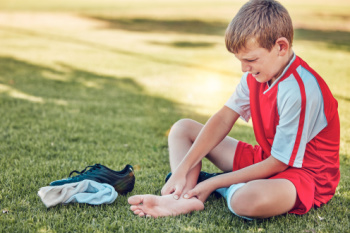
Sever's disease, medically known as calcaneal apophysitis, is a common cause of heel pain in growing children. This condition occurs when the growth plate in the heel becomes inflamed due to repetitive stress or excessive physical activity. Common causes include participation in sports that involve running or jumping, such as soccer or basketball. Symptoms of Sever's disease include pain and tenderness in the heel, swelling, and difficulty walking. Preventing this condition involves ensuring children wear properly fitting, supportive footwear and encouraging them to stretch before physical activity. Limiting activities that place excessive strain on the heel can also help. Early detection and management are vital to prevent long-term discomfort. If your child has heel pain, it is suggested that you consult a podiatrist.
Sever's disease often occurs in children and teens. If your child is experiencing foot or ankle pain, see one of our podiatrists from Carolina Foot & Ankle. Our doctors can treat your child’s foot and ankle needs.
Sever’s Disease
Sever’s disease is also known as calcaneal apophysitis, which is a medical condition that causes heel pain I none or both feet. The disease is known to affect children between the ages of 8 and 14.
Sever’s disease occurs when part of the child’s heel known as the growth plate (calcaneal epiphysis) is attached to the Achilles tendon. This area can suffer injury when the muscles and tendons of the growing foot do not keep pace with bone growth. Therefore, the constant pain which one experiences at the back of the heel will make the child unable to put any weight on the heel. The child is then forced to walk on their toes.
Symptoms
Acute pain – Pain associated with Sever’s disease is usually felt in the heel when the child engages in physical activity such as walking, jumping and or running.
Highly active – Children who are very active are among the most susceptible in experiencing Sever’s disease, because of the stress and tension placed on their feet.
If you have any questions, please feel free to contact one of our offices located in Huntersville Office | 16419 Northcross Dr Suite A, Huntersville, NC 28078; Mooresvillle Office | 206 Joe Knox Avenue Suite D, Mooresville, NC 28117; and Mountain Island | 10310 Couloak Drive Suite 200, Charlotte, NC 28216 . We offer the newest diagnostic and treatment technologies for all your foot and ankle injuries.
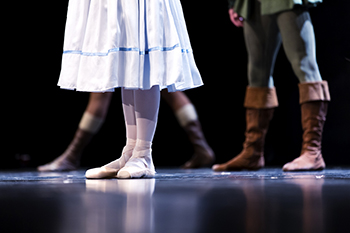 Dancers are prone to foot and ankle injuries due to the physical demands of their art. Risk factors can include inadequate warm-up, improper technique, and wearing unsuitable footwear. Overuse injuries, such as tendinitis and stress fractures, result from repetitive movements and intense training schedules. Acute injuries often occur from sudden movements or missteps, leading to sprains or fractures. Additionally, common ankle injuries in dancers include lateral ankle sprains, where the ligaments on the outside of the ankle are stretched or torn, and Achilles tendinitis, which causes pain and inflammation in the tendon connecting the calf muscle to the heel. Ensuring proper warm-up routines, using supportive footwear, and focusing on technique can help prevent these injuries. Regular strength and flexibility training also play a critical role in maintaining foot and ankle health for dancers. If you are engaged in any type of dance and have endured a foot or ankle injury, it is suggested that you visit a podiatrist who can offer effective treatment methods.
Dancers are prone to foot and ankle injuries due to the physical demands of their art. Risk factors can include inadequate warm-up, improper technique, and wearing unsuitable footwear. Overuse injuries, such as tendinitis and stress fractures, result from repetitive movements and intense training schedules. Acute injuries often occur from sudden movements or missteps, leading to sprains or fractures. Additionally, common ankle injuries in dancers include lateral ankle sprains, where the ligaments on the outside of the ankle are stretched or torn, and Achilles tendinitis, which causes pain and inflammation in the tendon connecting the calf muscle to the heel. Ensuring proper warm-up routines, using supportive footwear, and focusing on technique can help prevent these injuries. Regular strength and flexibility training also play a critical role in maintaining foot and ankle health for dancers. If you are engaged in any type of dance and have endured a foot or ankle injury, it is suggested that you visit a podiatrist who can offer effective treatment methods.
Ankle and foot injuries are common among athletes and in many sports. They can be caused by several problems and may be potentially serious. If you are feeling pain or think you were injured in a sporting event or when exercising, consult with one of our podiatrists from Carolina Foot & Ankle. Our doctors will assess your condition and provide you with quality foot and ankle treatment.
Common Injuries
The most common injuries that occur in sporting activities include:
Symptoms
Symptoms vary depending upon the injury and in some cases, there may be no symptoms at all. However, in most cases, some form of symptom is experienced. Pain, aching, burning, bruising, tenderness, tightness or stiffness, sensation loss, difficulty moving, and swelling are the most common symptoms.
Treatment
Just as symptoms vary depending upon the injury, so do treatment options. A common treatment method is known as the RICE method. This method involves rest, applying ice, compression and elevating the afflicted foot or ankle. If the injury appears to be more serious, surgery might be required, such as arthroscopic or reconstructive surgery. Lastly, rehabilitation or therapy might be needed to gain full functionality in the afflicted area. Any discomfort experienced by an athlete must be evaluated by a licensed, reputable medical professional.
If you have any questions, please feel free to contact one of our offices located in Huntersville Office | 16419 Northcross Dr Suite A, Huntersville, NC 28078; Mooresvillle Office | 206 Joe Knox Avenue Suite D, Mooresville, NC 28117; and Mountain Island | 10310 Couloak Drive Suite 200, Charlotte, NC 28216 . We offer the newest diagnostic and treatment technologies for all your foot care needs.
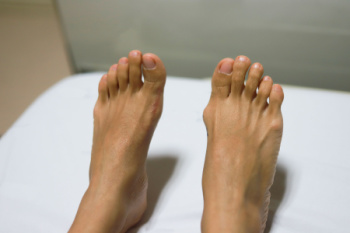 A bunion, medically known as hallux valgus, is a bony bump that forms on the joint at the base of the big toe, causing the toe to deviate toward the others. It occurs due to pressure on the big toe joint, often from wearing tight or ill-fitting shoes, genetics, or foot stress. Bunions can cause pain, swelling, redness, and difficulty in walking. They may also lead to other foot problems such as calluses, corns, and hammertoes. Management options depend on the severity of the bunion and the pain it causes. For mild cases, a wait and see approach can be effective, with changes in footwear to alleviate pressure. Orthotic devices, such as custom shoe inserts, can provide support and relieve pain. When conservative treatments fail and pain or deformity is severe, surgery may be necessary to realign the bone, ligaments, and tendons. If you have a bunion that is causing you discomfort, it is suggested that you schedule an appointment with a podiatrist who can determine what the best treatment approach is for you.
A bunion, medically known as hallux valgus, is a bony bump that forms on the joint at the base of the big toe, causing the toe to deviate toward the others. It occurs due to pressure on the big toe joint, often from wearing tight or ill-fitting shoes, genetics, or foot stress. Bunions can cause pain, swelling, redness, and difficulty in walking. They may also lead to other foot problems such as calluses, corns, and hammertoes. Management options depend on the severity of the bunion and the pain it causes. For mild cases, a wait and see approach can be effective, with changes in footwear to alleviate pressure. Orthotic devices, such as custom shoe inserts, can provide support and relieve pain. When conservative treatments fail and pain or deformity is severe, surgery may be necessary to realign the bone, ligaments, and tendons. If you have a bunion that is causing you discomfort, it is suggested that you schedule an appointment with a podiatrist who can determine what the best treatment approach is for you.
If you are suffering from bunions, contact one of our podiatrists of Carolina Foot & Ankle. Our doctors can provide the care you need to keep you pain-free and on your feet.
What Is a Bunion?
A bunion is formed of swollen tissue or an enlargement of boney growth, usually located at the base joint of the toe that connects to the foot. The swelling occurs due to the bones in the big toe shifting inward, which impacts the other toes of the foot. This causes the area around the base of the big toe to become inflamed and painful.
Why Do Bunions Form?
Genetics – Susceptibility to bunions are often hereditary
Stress on the feet – Poorly fitted and uncomfortable footwear that places stress on feet, such as heels, can worsen existing bunions
How Are Bunions Diagnosed?
Doctors often perform two tests – blood tests and x-rays – when trying to diagnose bunions, especially in the early stages of development. Blood tests help determine if the foot pain is being caused by something else, such as arthritis, while x-rays provide a clear picture of your bone structure to your doctor.
How Are Bunions Treated?
If you have any questions, please feel free to contact one of our offices located in Huntersville Office | 16419 Northcross Dr Suite A, Huntersville, NC 28078; Mooresvillle Office | 206 Joe Knox Avenue Suite D, Mooresville, NC 28117; and Mountain Island | 10310 Couloak Drive Suite 200, Charlotte, NC 28216 . We offer the newest diagnostic and treatment technologies for all your foot care needs.
 Certain foods are crucial to help recover from an injury. When we have damaged tissue, like a torn muscle or tendon, our body needs specific nutrients to heal stronger, and faster.
Certain foods are crucial to help recover from an injury. When we have damaged tissue, like a torn muscle or tendon, our body needs specific nutrients to heal stronger, and faster.
Healthy diet > Supplements
Vitamins and minerals from a food source are SUPERIOR to taking a supplement. Healthy food offers hundreds of antioxidants, carotenoids, flavonoids, and minerals not found in supplements! Additionally, when we eat a health diet, our body automatically maximizes absorption of "the good stuff", and eliminates what we don't need. Taking supplements can result in extremely high, or toxic, levels of vitamins, which can be harmful.
Assess your diet FIRST before taking supplements to ensure your body is getting what it needs to heal.
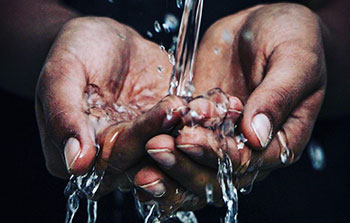 ~50% of our body composition is water~
~50% of our body composition is water~
We've all heard the cardinal rule for daily water consumption... "Adults need 6 to 8- 8oz glasses of water". But this isn't personalized for you or your activity level. YOUR WEIGHT determines your body's need. Other factors to consider are activity level, outside temperature, pregnancy, diet, and medications/health conditions.
Here's a more personalized way to estimate how much water YOU should be drinking:
Example: 150lb x 0.5= 75oz
Exercise for an hour= (60min/30min) x 12oz= 24oz
Recommended: 99oz of water
Signs of dehydration include: dry mouth, headache, muscle cramps, dark or strong smelling urine.
Talk to a medical professional if you have questions about your hydration level.
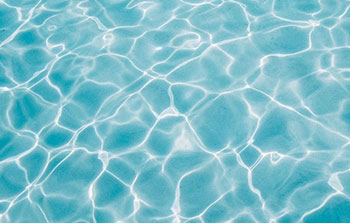 Are YOU working through an injury or rehabbing after surgery? Need a rest day as a competitive athlete?
Are YOU working through an injury or rehabbing after surgery? Need a rest day as a competitive athlete?
Aquatic/Water therapy provides numerous benefits:
Aquatic therapy is a MUST for athletes and HIGHLY RECOMMENDED for patients recovering from injuries or rehabilitating after surgery.
Find out if it's safe for you to incorporate aquatic therapy into your routine.
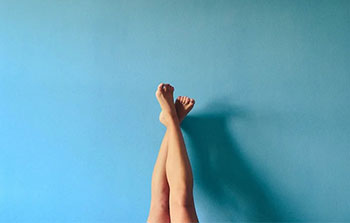 Believe it or not, there is ZERO hard scientific evidence backing scar management with creams, ointments, patches, lasers, retinol, steroids, and more. It's a 22.5 billion dollar industry (2022) for good reason...Most people want to avoid unsightly scars!
Believe it or not, there is ZERO hard scientific evidence backing scar management with creams, ointments, patches, lasers, retinol, steroids, and more. It's a 22.5 billion dollar industry (2022) for good reason...Most people want to avoid unsightly scars!
Your body's ability to heal an incision is largely determined by:
So what to do?
The BEST thing you can do to maximize your body's ability to heal is to eat a healthy, well-balanced diet and drink plenty of water. It will keep your cells happy and functioning properly.
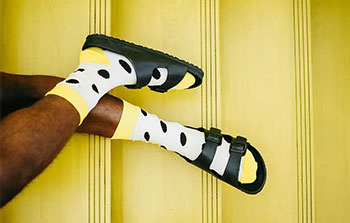 Compression garments (CGs), such as socks, sleeves, shorts, etc., have been investigated for years to elucidate health benefits.
Compression garments (CGs), such as socks, sleeves, shorts, etc., have been investigated for years to elucidate health benefits.
What YOU should know:
Use of compression during and after exercise can:
For patients recovering from surgery, CGs promote circulation, reduce swelling, and decrease risk of blood clots (DVT).
We can ALL benefit from compression garments. Talk to a healthcare professional today about how COMPRESSION can help you!